 W
WPaper is a thin sheet material produced by mechanically and/or chemically processing cellulose fibres derived from wood, rags, grasses or other vegetable sources in water, draining the water through fine mesh leaving the fibre evenly distributed on the surface, followed by pressing and drying. Although paper was originally made in single sheets by hand, almost all is now made on large machines—some making reels 10 metres wide, running at 2,000 metres per minute and up to 600,000 tonnes a year. It is a versatile material with many uses, including printing, packaging, decorating, writing, cleaning, filter paper, wallpaper, book endpaper, conservation paper, laminated worktops, toilet tissue, currency and security paper and a number of industrial and construction processes.
 W
WAcid-free paper is paper that if infused in water yields a neutral or basic pH. It can be made from any cellulose fiber as long as the active acid pulp is eliminated during processing. It is also lignin- and sulfur-free. Acid-free paper addresses the problem of preserving documents and preserving artwork for long periods.
 W
WBamboos are evergreen perennial flowering plants in the subfamily Bambusoideae of the grass family Poaceae. The origin of the word "bamboo" is uncertain, but it probably comes from the Dutch or Portuguese language, which originally borrowed it from Malay or Kannada.
 W
WBanana paper is a type of paper created from banana plant bark or banana peel fibers. Banana paper has a lower density, higher stiffness, higher disposability, higher renewability, and higher tensile strength compared to traditional paper. These qualities are due to the cellular composition of banana fiber, which consists of cellulose, hemicellulose, and lignin.
 W
WBible paper, also known as scritta paper, is a thin grade of paper used for printing books which have many pages, such as a dictionary. Technically, Bible paper may be called lightweight offset paper and is a type of woodfree uncoated paper. This paper grade often contains cotton or linen fibres to increase its strength in spite of its thinness.
 W
WPaperboard is a thick paper-based material. While there is no rigid differentiation between paper and paperboard, paperboard is generally thicker than paper and has certain superior attributes such as foldability and rigidity. According to ISO standards, paperboard is a paper with a grammage above 250 g/m2, but there are exceptions. Paperboard can be single- or multi-ply.
 W
WBlotting paper, sometimes called bibulous paper, is a highly absorbent type of paper or other material. It is used to absorb an excess of liquid substances from the surface of writing paper or objects. Blotting paper referred to as bibulous paper is mainly used in microscopy to remove excess liquids from the slide before viewing. Blotting paper has also been sold as a cosmetic to aid in the removal of skin oils and makeup.
 W
WBristol board is an uncoated, machine-finished paperboard. It is named after the city of Bristol in the southwest of England as that is where it was first produced. Common sizes include 22 1⁄2 in × 28 1⁄2 in and its bulk thickness is 0.006 inches (0.15 mm) or higher and A4, A3, A2 and A1. Bristol board may be rated by the number of plies it contains or, in Europe, by its grammage of 220 to 250 g/m2. It is normally white, but is also made in different colours.
 W
WCarbonless copy paper (CCP), non-carbon copy paper, or NCR paper is a type of coated paper designed to transfer information written on the front onto sheets beneath. It was developed by chemists Lowell Schleicher and Barry Green, as an alternative to carbon paper and is sometimes misidentified as such.
 W
WCard stock, also called cover stock and pasteboard, is paper that is thicker and more durable than normal writing and printing paper, but thinner and more flexible than other forms of paperboard.
 W
WA compact newspaper is a broadsheet-quality newspaper printed in a tabloid format, especially one in the United Kingdom. The term as used for this size came into use after The Independent began producing a smaller format edition in 2003 for London's commuters, designed to be easier to read when using mass transit.
 W
WThe conical refiner is a machine used in the refining of pulp in the papermaking process. It may also be referred to as a Jordan refiner, after the American inventor Joseph Jordan who patented the device in 1858.
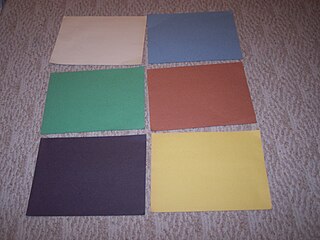 W
WConstruction paper, also known as sugar paper, is coloured cardstock paper. The texture is slightly rough, and the surface is unfinished. Due to the source material, mainly wood pulp, small particles are visible on the paper's surface. It is used for projects or crafts.
 W
WContainerboard is a type of paperboard specially manufactured for the production of corrugated board. It includes both linerboard and corrugating medium, the two types of paper that make up corrugated board. Since containerboard is made mainly out of natural unbleached wood fibers, it is generally brown, although its shade may vary depending on the type of wood, pulping process, recycling rate and impurities content. For certain boxes that demand good presentation, white bleached pulp or coating is used on the top ply of the linerboard that goes outside the box.
 W
WCorrection paper, or correction film, its plastic based equivalent, is a tab of plastic with one side coated with white correction material. It is used to correct typing errors made when using a typewriter. When inserted between the paper and the ribbon, the impression of the typebar presses the shape of the character into the film, which prints the white correction material onto the paper, hiding the erroneous character and preparing the document for the correct character.
 W
WContainerboard is a type of paperboard specially manufactured for the production of corrugated board. It includes both linerboard and corrugating medium, the two types of paper that make up corrugated board. Since containerboard is made mainly out of natural unbleached wood fibers, it is generally brown, although its shade may vary depending on the type of wood, pulping process, recycling rate and impurities content. For certain boxes that demand good presentation, white bleached pulp or coating is used on the top ply of the linerboard that goes outside the box.
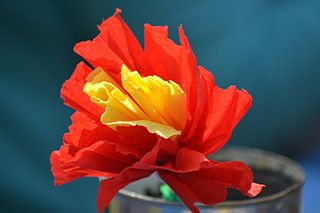 W
WCrêpe paper is tissue paper that has been coated with sizing. It can then be creased in a way similar to party streamers to create gathers, giving it a crinkly texture like that of crêpe. This creasing process is called creping or crêping.
 W
WDó paper is a paper made from the inner bark of the dó tree and traditionally produced in many villages in Vietnam. It plays an important role in folk art, Dong Ho Painting in particular, because of its durability.
 W
WA double fold is a process of folding a paper sample first backwards and then forwards about the same line, i.e. one complete oscillation. The number of double folds that is required to make a test piece break is used to determine the material's folding endurance and fold number.
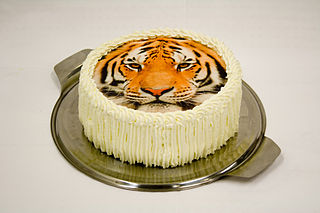 W
WEdible ink printing is the process of creating preprinted images with edible food colors onto various confectionery products such as cookies, cakes and pastries. Designs made with edible ink can be either preprinted or created with an edible ink printer, a specialty device which transfers an image onto a thin, edible paper.
 W
WElectronic paper, also sometimes electronic ink or electrophoretic display, are display devices that mimic the appearance of ordinary ink on paper. Unlike conventional flat panel displays that emit light, electronic paper displays reflect light like paper. This may make them more comfortable to read, and provide a wider viewing angle than most light-emitting displays. The contrast ratio in electronic displays available as of 2008 approaches newspaper, and newly (2008) developed displays are slightly better. An ideal e-paper display can be read in direct sunlight without the image appearing to fade.
 W
WContainerboard is a type of paperboard specially manufactured for the production of corrugated board. It includes both linerboard and corrugating medium, the two types of paper that make up corrugated board. Since containerboard is made mainly out of natural unbleached wood fibers, it is generally brown, although its shade may vary depending on the type of wood, pulping process, recycling rate and impurities content. For certain boxes that demand good presentation, white bleached pulp or coating is used on the top ply of the linerboard that goes outside the box.
 W
WFolding boxboard, also referred to as FBB or by the DIN Standard 19303 codes of GC or UC, is a paperboard grade made up of multiple layers of chemical and mechanical pulp. This grade is made up of mechanical pulp in between two layers of chemical pulp. The top layer is of bleached chemical pulp with an optional pigment coating. This is a low-density material with high stiffness and has a slightly yellow colour, mainly on the inside. The major end uses of folding boxboard are health and beauty products, frozen, chilled and other foods, confectionaries, pharmaceuticals, graphical uses and cigarettes.
 W
WFoolscap folio is paper cut to the size of 8 1⁄2 × 13 1⁄2 in (220 × 340 mm) for printing or to 8 × 13 in (200 × 330 mm) for "normal" writing paper. This was a traditional paper size used in Europe and the British Commonwealth, before the adoption of the international standard A4 paper.
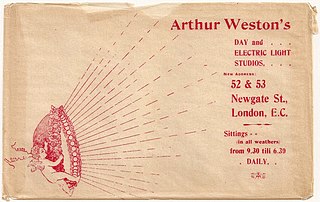 W
WGlassine is a smooth and glossy paper that is air, water, and grease resistant. It is usually available in densities between 50–90 g/m2. It is translucent unless dyes are added to color it or make it opaque. It is manufactured by supercalendering: after pressing and drying, the paper web is passed through a stack of alternating steel- and fiber-covered rolls called a supercalender at the end of the paper machine such that the paper fibers flatten facing in the same direction.
 W
WA greased paper window is a very inexpensive window made of paper coated in grease. The grease fills gaps between the paper fibers, reducing the amount of light lost to scattering. Greased paper windows provide a diffuse light source, while blocking wind and preventing insects and other small animals from entering a structure.
 W
WGreaseproof paper is paper that is impermeable to oil or grease and is normally used in cooking or food packaging. Normally greaseproof paper is produced by refining the paper stock and thus create a sheet with very low porosity. This sheet is passed between hard pressure rollers (supercalendered) to further increase the density, creating a paper called glassine. The glassine is treated with starches, alginates or carboxymethyl cellulose (CMC) in a size press to fill pores or treat the paper chemically to make it fat repellent. Basis weights are usually 30–50 g/m².
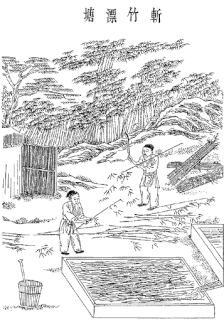 W
WPaper is a thin nonwoven material traditionally made from a combination of milled plant and textile fibres. It is primarily used for writing, artwork, and packaging; it is commonly white. The first papermaking process was documented in China during the Eastern Han period traditionally attributed to the court official Cai Lun. During the 8th century, Chinese papermaking spread to the Islamic world, where pulp mills and paper mills were used for papermaking and money making. By the 11th century, papermaking was brought to Europe. By the 13th century, papermaking was refined with paper mills utilizing waterwheels in Spain. Later European improvements to the papermaking process came in the 19th century with the invention of wood-based papers.
 W
WIndia paper is a type of paper which from 1875 has been based on bleached hemp and rag fibres, that produced a very thin, tough opaque white paper. It has a basis weight of 20 pounds, yet bulks 1,000 pages to the inch.
 W
WInkjet paper is a special fine paper designed for inkjet printers, typically classified by its weight, brightness and smoothness, and sometimes by its opacity.
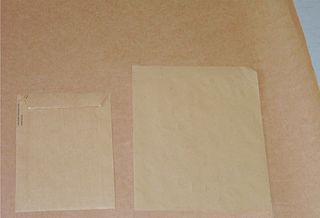 W
WKraft paper or kraft is paper or paperboard (cardboard) produced from chemical pulp produced in the kraft process.
 W
WContainerboard is a type of paperboard specially manufactured for the production of corrugated board. It includes both linerboard and corrugating medium, the two types of paper that make up corrugated board. Since containerboard is made mainly out of natural unbleached wood fibers, it is generally brown, although its shade may vary depending on the type of wood, pulping process, recycling rate and impurities content. For certain boxes that demand good presentation, white bleached pulp or coating is used on the top ply of the linerboard that goes outside the box.
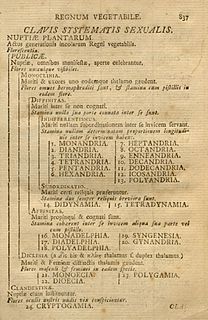 W
WLaid paper is a type of paper having a ribbed texture imparted by the manufacturing process. In the pre-mechanical period of European papermaking, laid paper was the predominant kind of paper produced. Its use, however, diminished in the 19th century, when it was largely supplanted by wove paper. Laid paper is still commonly used by artists as a support for charcoal drawings.
 W
WLokta paper is a wildcrafted, handmade artisan paper indigenous to Nepal.
 W
WManila paper is a relatively inexpensive type of paper, generally made through a less-refined process than other types of paper, and is typically made from semi-bleached wood fibres. It is just as strong as kraft paper but has better printing qualities. Manila is buff-coloured and the fibres of the paper are usually visible to the naked eye.
 W
WNewsprint is a low-cost, non-archival paper consisting mainly of wood pulp and most commonly used to print newspapers and other publications and advertising material. Invented in 1844 by Charles Fenerty of Nova Scotia, Canada, it usually has an off white cast and distinctive feel. It is designed for use in printing presses that employ a long web of paper rather than individual sheets of paper.
 W
WOnionskin or onion skin is a thin, light-weight, strong, often translucent paper. Though not made from onions, it superficially resembles their thin, papery skins. It was usually used with carbon paper for typing duplicates in a typewriter, for permanent records where low bulk was important, or for airmail correspondence. It is typically 25–39 g/m², and may be white or canary-colored.
 W
WA page is one side of a leaf of paper, parchment or other material in a book, magazine, newspaper, or other collection of sheets, on which text or illustrations can be printed, written or drawn, to create documents. It can be used as a measure of communicating general quantity of information or more specific quantity
 W
WPaper car wheels were composite wheels of railway carriages, made from a wrought iron or steel rim bolted to an iron hub with an interlayer of laminated paper. The center was made of compressed paper held between two plate-iron disks. Their ability to damp rail/wheel noise resulted in a quiet and smooth ride for the passengers of North American Pullman dining and sleeping cars.
 W
WPaper density is its mass per unit volume. "ISO 534:2011, Paper and board — Determination of thickness, density and specific volume", indicates it is expressed in grams per cubic centimeter.
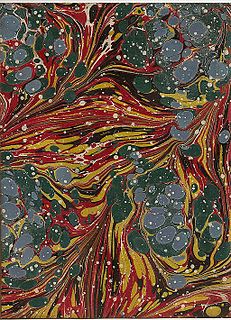 W
WPaper marbling is a method of aqueous surface design, which can produce patterns similar to smooth marble or other kinds of stone. The patterns are the result of color floated on either plain water or a viscous solution known as size, and then carefully transferred to an absorbent surface, such as paper or fabric. Through several centuries, people have applied marbled materials to a variety of surfaces. It is often employed as a writing surface for calligraphy, and especially book covers and endpapers in bookbinding and stationery. Part of its appeal is that each print is a unique monotype.
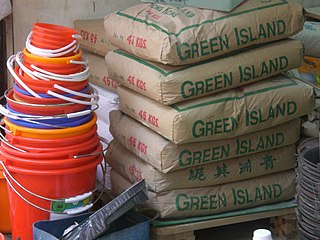 W
WA paper sack is shipping container made of high quality and weight paper, usually kraft virgin fiber, which is normally used for transporting powder materials, such as flour, cement, animal feed, etc. Multi-wall paper bags usually have several layers of heavy duty kraft paper, sometimes with a highly printed paper on the outside. Plastic films and coated papers are sometimes used as inner layers to provide a moisture barrier, and resistance to rodents and insects.
 W
WPaper size standards govern the size of sheets of paper used as writing paper, stationery, cards, and for some printed documents.
 W
WPaperboard is a thick paper-based material. While there is no rigid differentiation between paper and paperboard, paperboard is generally thicker than paper and has certain superior attributes such as foldability and rigidity. According to ISO standards, paperboard is a paper with a grammage above 250 g/m2, but there are exceptions. Paperboard can be single- or multi-ply.
 W
WA paperweight is a small solid object heavy enough, when placed on top of papers, to keep them from blowing away in a breeze or from moving under the strokes of a painting brush. While any object can serve as a paperweight, decorative paperweights of glass are produced, either by individual artisans or factories, usually in limited editions, and are collected as works of fine glass art, some of which are exhibited in museums. First produced in about 1845, particularly in France, such decorative paperweights declined in popularity before undergoing a revival in the mid-twentieth century.
 W
WParchment craft, also known as Pergamano, is the art of embellishing and decorating parchment paper through the use of techniques such as embossing, perforating, stippling, cutting and coloring.
 W
WParchment paper, baking paper, liners or bakery release paper is cellulose-based paper that has been treated or coated to make it non-stick. It is used in baking as a disposable non-stick surface. It should not be confused with wax paper or waxed paper, which is paper that has been coated in wax.
 W
WPostage stamp paper is the foundation or substrate of the postage stamp to which the ink for the stamp's design is applied to one side and the adhesive is applied to the other. The paper is not only the foundation of the stamp but it has also been incorporated into the stamp's design, has provided security against fraud and has aided in the automation of the postal delivery system.
 W
WRed rosin paper is a 100% recycled heavy duty felt paper used in construction such as underlayment under flooring and siding. The name "rosin-sized sheathing paper", commonly used to describe the material, comes from the rosin used in the paper, the process of sizing it to add the rosin, and its use by builders. "Alum-rosin size was invented by Moritz Friedrich Illig in Germany in 1807..." and is known to have been used as a building paper by 1850.
 W
WSolid bleached board (SBB) or solid bleached sulphate (SBS) is a virgin fibre grade of paperboard.
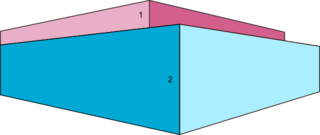 W
WSolid unbleached board, also known as SUB, is a grade of paperboard typically made of unbleached chemical pulp. Most often it comes with two to three layers of mineral or synthetic pigment coating on the top and one layer on the reverse side. Recycled fibres are sometimes used to replace the unbleached chemical pulp.
 W
WTar paper is a heavy-duty paper used in construction. Tar paper is made by impregnating paper or fiberglass mat with tar, producing a waterproof material useful for roof construction. Tar paper is distinguished from roofing felt which is impregnated with asphalt instead of tar; but these two products are used the same way, and their names sometimes are used informally as synonyms.
 W
WContainerboard is a type of paperboard specially manufactured for the production of corrugated board. It includes both linerboard and corrugating medium, the two types of paper that make up corrugated board. Since containerboard is made mainly out of natural unbleached wood fibers, it is generally brown, although its shade may vary depending on the type of wood, pulping process, recycling rate and impurities content. For certain boxes that demand good presentation, white bleached pulp or coating is used on the top ply of the linerboard that goes outside the box.
 W
WTissue paper or simply tissue is a lightweight paper or, light crêpe paper. Tissue can be made from recycled paper pulp.
 W
WTissue-pack marketing is a type of guerrilla marketing that is a phenomenon in Japan. Companies use small, portable tissue packages to move advertising copy directly into consumers' hands. About 4 billion of these packages of tissues are distributed on the streets annually in Japan—largely outside of subway stations. This industry generates sales in the range of ¥75 billion annually.
 W
WTracing paper is paper made to have low opacity, allowing light to pass through. It was originally developed for architects and design engineers to create drawings which could be copied precisely using the diazo copy process; it then found many other uses. The original use for drawing and tracing was largely superseded by technologies which do not require diazo copying or manual copying of drawings.
 W
WVulcanized fibre or red fibre is a laminated plastic composed of only cellulose. The material is a tough, resilient, hornlike material that is lighter than aluminium, tougher than leather, and stiffer than most thermoplastics. The newer wood-laminating grade of vulcanized fibre is used to strengthen wood laminations used in skis, skateboards, support beams and as a sub-laminate under thin wood veneers.
 W
WWatercolor paper is paper or substrate onto which an artist applies watercolor paints, pigments or dyes. There are currently many types of paper available that are manufactured for the use with watercolors. Watercolor paper can be made of wood pulp exclusively, or mixed with cotton fibers. Pure cotton watercolor paper is also used by artists though it typically costs more than paper. It is also available as an acid-free medium to help its preservation. Watercolor paper can be described according to the manufacturing process. It can be hot pressed, cold pressed or rough. A number of companies sell watercolor papers, some of them with a long history of production.
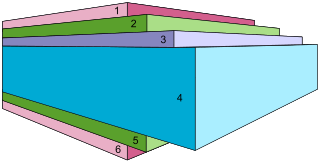 W
WWhite-lined chipboard is a grade of paperboard typically made from layers of waste paper or recycled fibers. Most often it comes with two to three layers of coating on the top and one layer on the reverse side. Because of its recycled content it will be grey from the inside. The main end use for this type of board is for packaging of frozen or chilled food, cereals, shoes, toys and others.
 W
WWove paper is a writing paper with a uniform surface, not ribbed or watermarked. The papermaking mould's wires run parallel to each other to produce laid paper, but they are woven together into a fine wire mesh for wove paper. The originator of this new papermaking technique was James Whatman (1702–1759) from Kent, England.